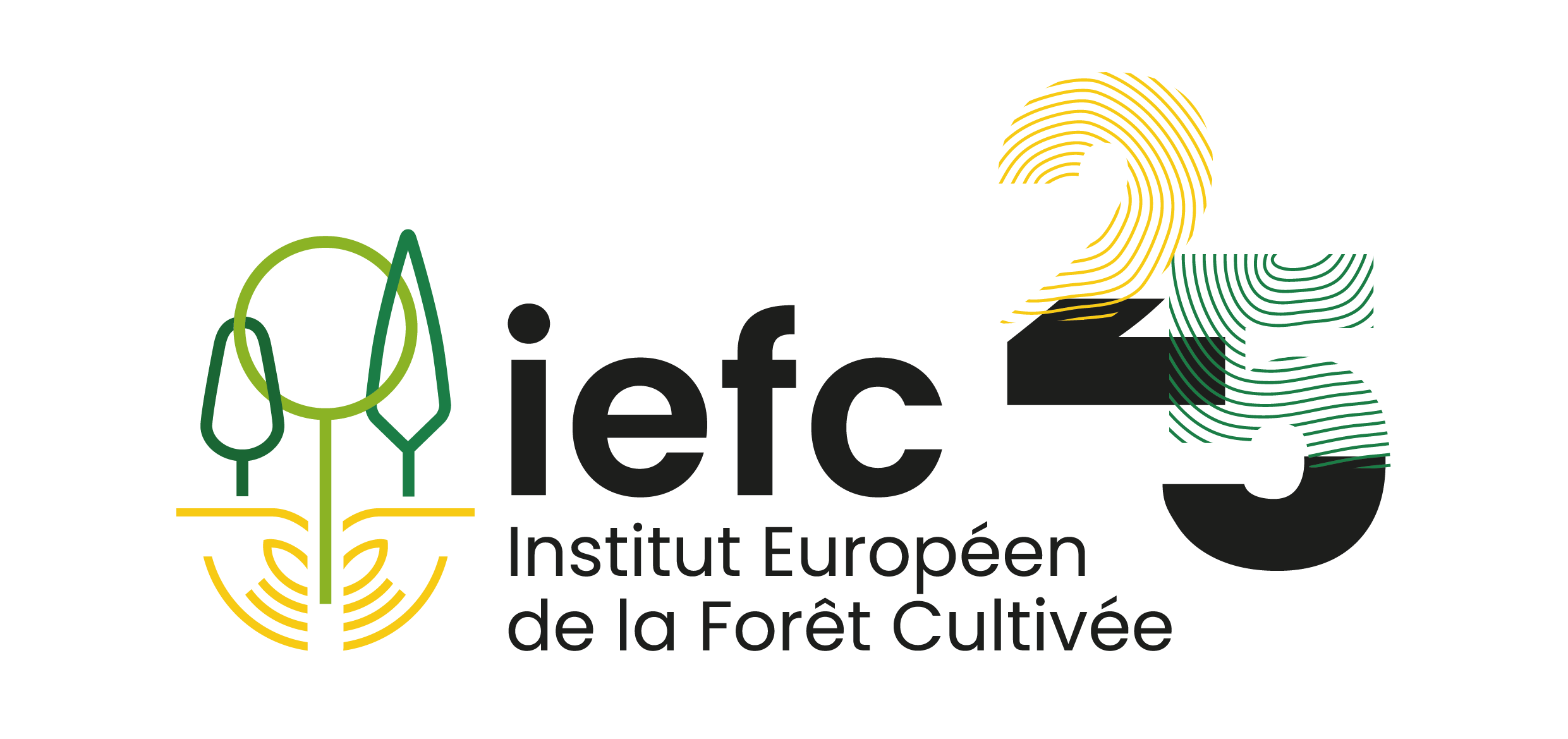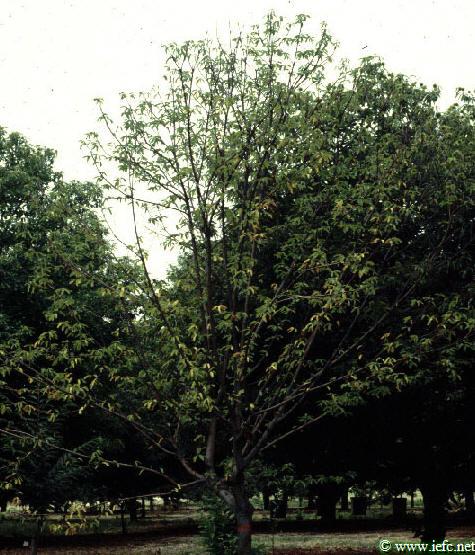Chestnut ink disease
Phytophthora cinnamomi & Phytophthora cambivora (Oomycota, Peronosporales).
Host tree
Chestnut (Castanea sativa, C. sativa x crenata and C. sativa x mollissima). Several other plant and tree species, such as Erica species, almonds (Prunus), oaks (Quercus) and walnuts (Juglans) are also susceptible to these two Phytophthora species.
Identification
- Decline with yellowing and lightening of the crown.
- Leaves and nuts are reduced in size, fruits do not reach maturity, and leaves and fruits do not fall.
- Necrosis of fine and main roots, which can lead to a strong reduction of root biomass.
- Occasionally, necrosis of the inner bark at the collar, spreading upwards in flame shape along the cambium. Necrosed tissues are brown and delimited by a black line. On the outside some black, ink-like exudates can seep out of small cracks in the bark.
- To isolate and identify the Phytophthora species, laboratory studies are required. The two species are similar, P. cambivora has a narrower host spectrum and a lower survival capacity in the soil and in plants than P. cinnamomi.
Damage
- Decline can lead to mortality.
- Seedlings are very susceptible and can die in one year, for older trees decline is progressive, and it varies with environmental conditions.
Biology
- The two Phytophthora species are soilborn pathogens. Roots are infected by zoospores which are released when free water is available in the soil. Mycelium invades the roots and sometimes the collar (not more than 1 m upwards on the tree trunk).
- When soil temperature and water conditions are favourable, sporangia are formed in infected roots which release new zoospores. The pathogen can survive in the soil when resting spores (chlamydospores) are formed. In Europe there is no sexual reproduction of P. cinnamomi.
- The two Phytophthora species are present in southwest Europe, with different regional importance.
- The disease can be spread with infected water, soil or plants.
Risk factors
- Ink disease is favoured in poorly drained soils.
- Chestnut decline is more rapid under water stress conditions.
Pest management
Preventive measurements
- All measures which reduce the spread or the multiplication of the pathogen:
- draining,
- minimizing infected soil transfer,
- use of non infected plants in new plantations,
- use of tolerant varieties: hybrids with C. crenata or C. mollissima exhibit a low susceptibility to ink disease (tolerant clones are available in several nurseries in France, Spain and in Portugal (CENASEF ”Centro Nacional de Sementes Nacionais”).
Curative control
- No chemicals are allowed in France and Spain, neither in chestnut forests nor orchards. In Portugal the use of fosethyl-Al is allowed in oak forests but not in chestnut forests.



